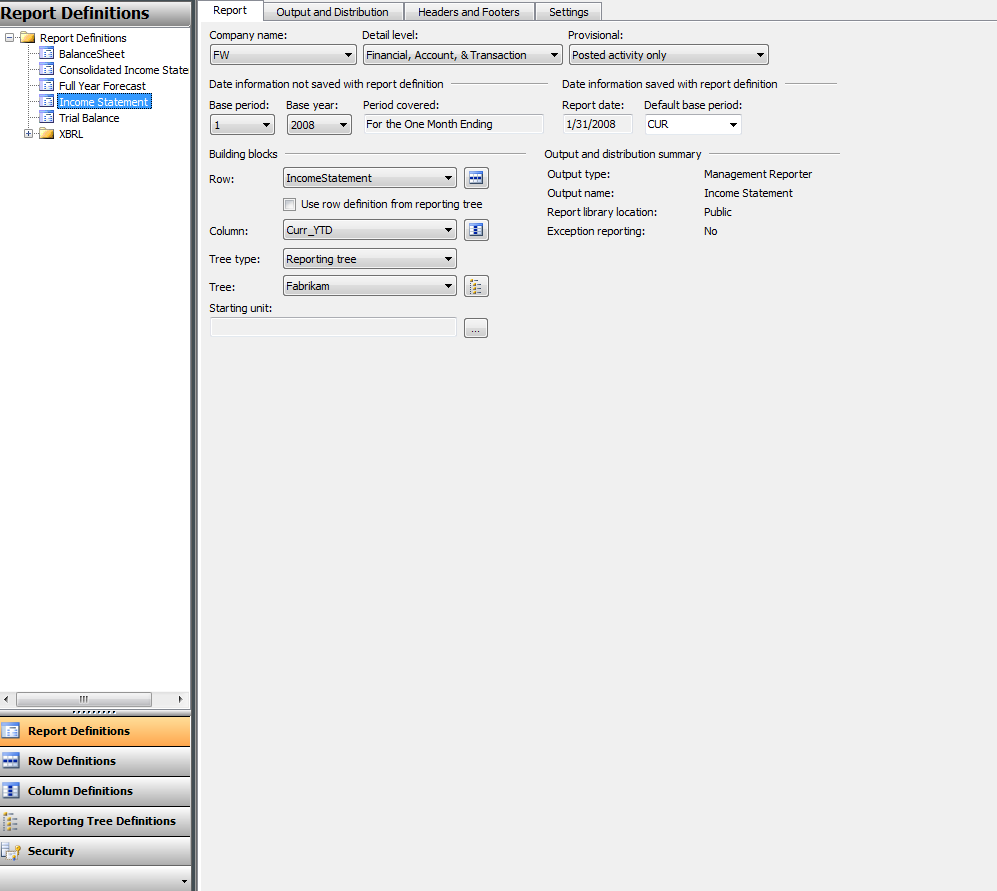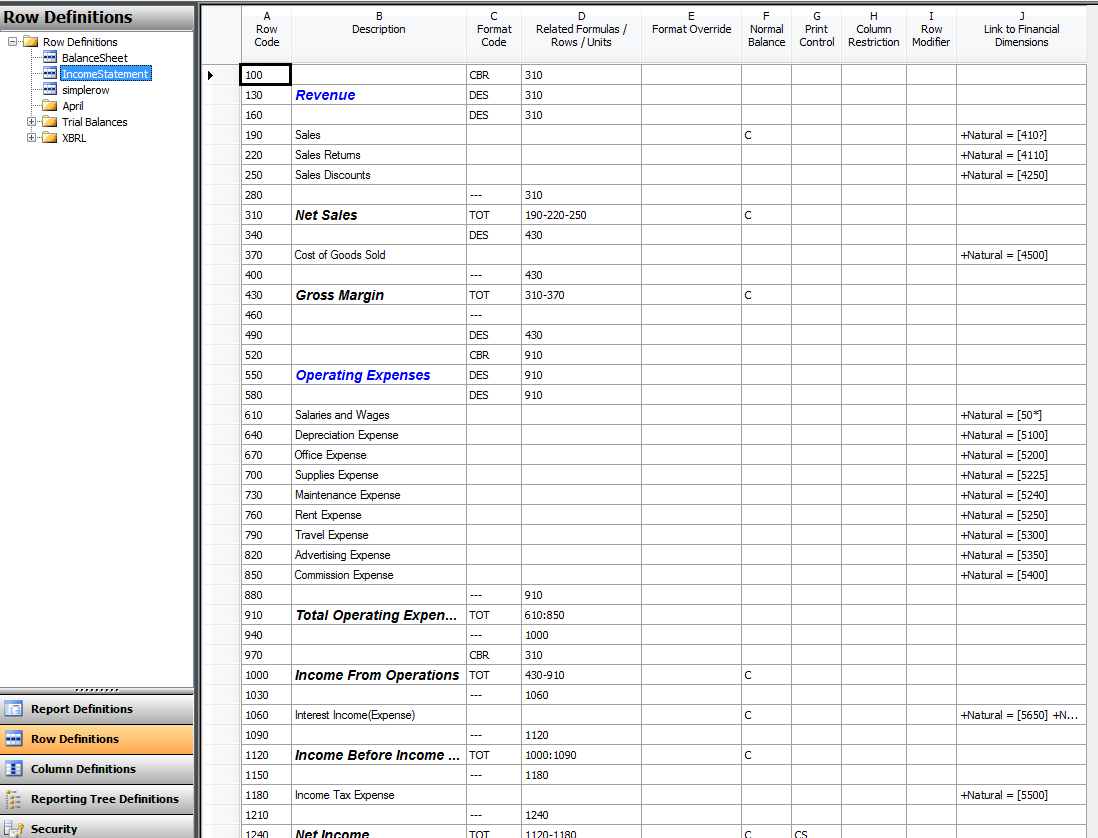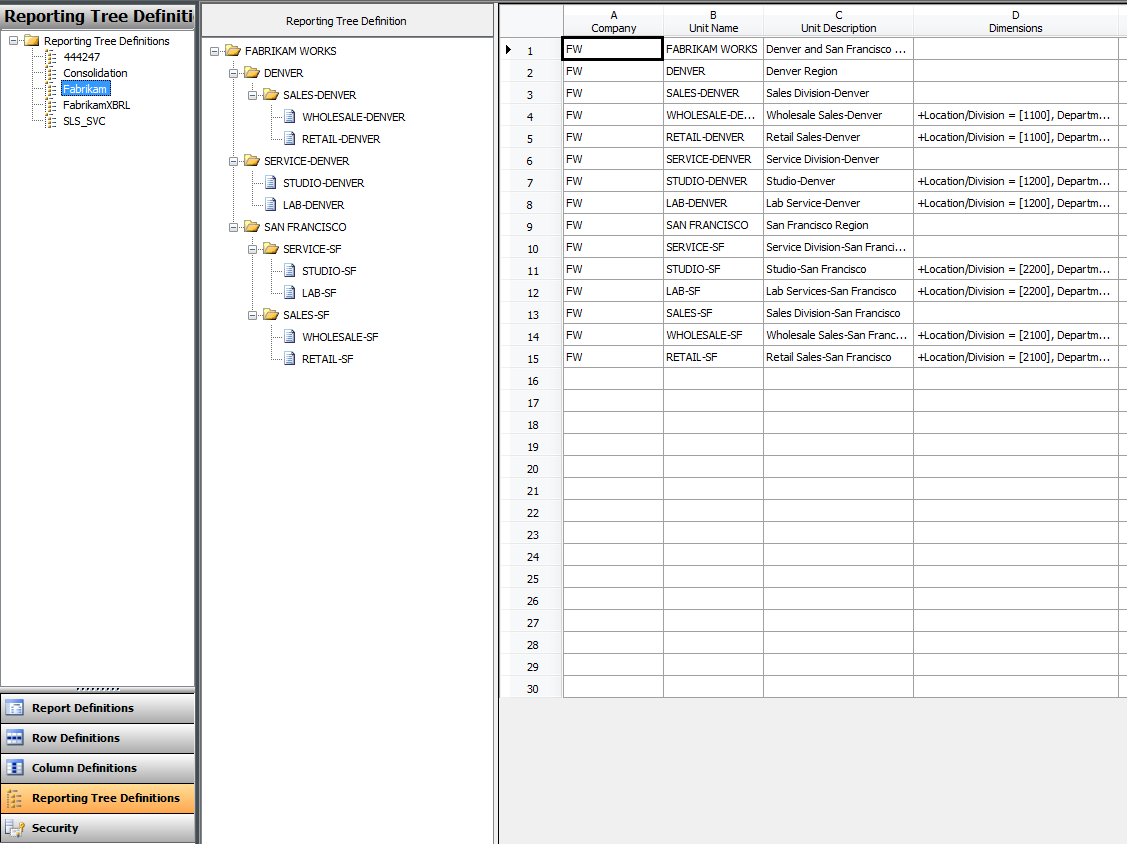If you like FRx, you'll love Management Reporter
Worried about the transition from FRx to Management Reporter? Well, don’t be. Management Reporter is built using the same concepts as Microsoft FRx. Rows, columns, and trees still exist. Catalogs exist too, only with a different name, report definition. The process for modifying and building reports is the same. And, Management Reporter has one of the most requested FRx features. Drumroll please….UNDO! So, if you do add the wrong account or formatting, you can simply use the Undo button (or ctrl-z if you are a keyboard person) to roll back the change.
Want proof? As one partner put it, “It’s like FRx on steroids!”
Check out the screen shots below for more!
Report Definition (Catalog in FRx)
In the report definition, Management Reporter surfaces the tasks and options used the most on four easy to navigate tabs. The options on these tabs are easy to find and select.
Row Definition
Creating a row in Management Reporter is easy! Simply go to Edit > Insert Rows and start adding your formatting and calculations.
Column Definition
Defining periods in the column definition is also simple. Select the column type and book code and use the BASE functionality for periods and fiscal years.
Reporting Tree Definition
As with the row definition, creating a reporting tree definition is simple. Just go to Edit > Insert Reporting units.
Now that we’ve covered about how easy Management Reporter is to use, let’s talk about the new architecture for a minute.
64-bit support
• Many companies are upgrading their systems to 64-bit. Management Reporter was built using in 64-bit environments. The IT department won’t need to maintain a separate machine just for Management Reporter as they may need to do for FRx.
Improved stability
• The FRx code base was close to 20 years old and the design experience was closely tied to report generation. Management Reporter is more stable. Each area of the application (designing, processing, and viewing) is isolated, making it easier to identify exactly where issues are.
Improved performance
• Processing takes place on the server, not the client. This frees up the client to continue designing reports instead of locking it up until the report has finished generating.
SQL Server support
• No more Microsoft Access databases! This means no more corrupted spec files, no need to rebuild indexes to ensure new accounts are picked up. This results in fewer calls to IT or your partner to “fix” the issue. As a result, end users are much more productive.
Improved multi-user environment
• With the switch to IIS and SQL Server, there is no need to create shares for the sysdata and io_data. All of the building block, company information and generated reports are in a SQL database. Administrators can see all reports that are being generated at any given time since all processing is done on the server.
Active directory support
• Once users are added to Management Reporter, any changes made to passwords, etc. by users are automatically rolled forward. There is no need to “manage” users in Management Reporter unless a user needs to be disabled or given a new security role. This also means fewer login screens for the user.
Check back next week for information regarding the Formatting and Organization enhancements in Management Reporter!
Comments
Anonymous
August 18, 2010
a copycat product of FRx except it designed for the 64 bit operating system, nothing new and FRx can be installed and run on 64bit as well if you don't install additional service pack. What about FRx webport and report server? I have not seen yet in MRP.Anonymous
February 10, 2011
Are you talking about 6.7 without any SPs? If not, up to what SP can it run okay on 64-bit?



